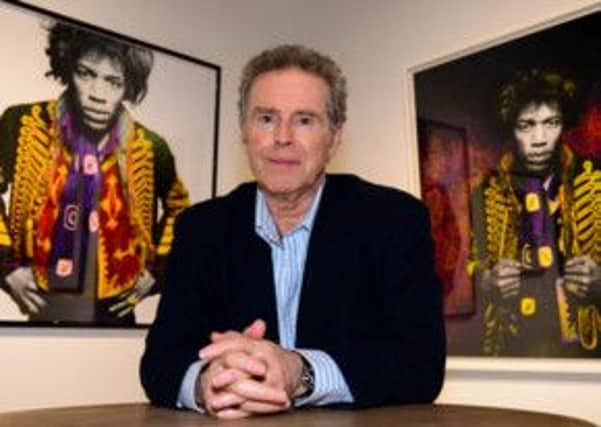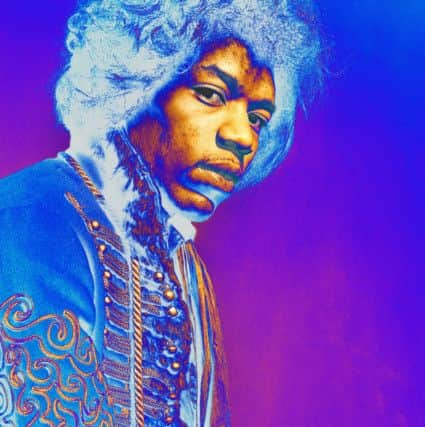Purple Haze: The voice of Experience


Gered Mankowitz photographed most of the music greats from the 1960s onwards, capturing artists from the Rolling Stones to Duran Duran, from Marianne Faithful to Annie Lennox, with images that are now forever linked to that particular artist and that particular time. None more so, than his series of portraits of Jimi Hendrix.
In London, during the early 1960s, there was an extraordinary collection of musicians, writers, artists and photographers who helped shape, contribute and record the rapid development of creativity. London really was swinging. Mankowitz, along with the likes of David Bailey, Terence Donovan and Terry O’Neill, applied their own way of seeing and their images give a kaleidoscopic view of that particular world.
Advertisement
Hide AdAdvertisement
Hide AdMankowitz picked up a camera at the age of 15. Working for Tom Blau’s Camera Press, who had spotted the potential in his pictures of a school trip to Holland, he gained valuable experience before covering assignments in London.


Mankowitz’s music photography career started in 1963, after his pictures were used as an album cover for vocal duo Chad and Jeremy. Working with new music producers such as Chris Blackwell and John Barry, there was a shared imperative for a new way of photographing musicians. The growing culture of pop was staffed by a very young generation of musicians who found they could relate to a photographer who was on their wavelength.
Mankowitz’s studio was at No.9, Mason’s Yard. The Yard had “a sort of attractive, seedy French glamour” and was a significant crossroads for all sorts of artists. There was the gallery, Indica, where John Lennon met Yoko and opposite was the Scotch of St James, the club where among others The Beatles, the Rolling Stones, Rod Stewart and Eric Burden were familiar faces.
On most nights the Yard would be crammed with Aston Martins and Jaguars. It was a major destination. Just up the road was the Crazy Elephant, a popular hang out for models and actresses. It was against this backdrop that, in 1966 The Scotch saw the debut of Jimi Hendrix, playing with the house band on his first night in London.
Advertisement
Hide AdAdvertisement
Hide AdMankowitz explained that then, in the early 1960s when the musicians came into the studio, “the majority of them weren’t established stars, they were ordinary or ‘real’ people and it was my job to instill confidence and trust”.
“For me it was about interpreting their musical persona and the best way to achieve that was for me to be open. I wanted them to shine through in the pictures, I didn’t want to impose my style.
“Jimi was very easy to work with. He was shy, very modest and without any of the ego and force of personality that came through when he was on stage.”
The pictures reflect someone who is at ease, a man who is comfortable in front of the camera, able to look it in the eye in a very unselfconscious way.
Advertisement
Hide AdAdvertisement
Hide AdMankowitz’s series of photographs, taken just before Jimi Hendrix burst from backstage obscurity to the centre stage of the 60s musical revolution, are a powerful and evocative testament. The simple use of black and white of the original prints give a wonderful documentary aspect to the exhibition. The photographs, all shot on a Hasselblad, the only camera Mankowitz has ever used, are framed with a skill and expertise that brings to the fore not just a picture of his subject, but he captures the textures, tone and emotion within the frame.
If you thought the pictures are just a relic of the past, black and white curiosities of the 60s, think again. Gered Mankowiz has re-invented those pictures, applying colours and techniques that mirror the Jimi Hendrix ‘experience’. With fantastic attention to detail and creativity, his application of colour and styling, the use of light boxes, and printing with metallic finishes, the photographs have gained a new lease of life.
A new audience can get an insight into the spark that burned so brightly and briefly. Three years after these pictures were taken, it was all over. Jimi Hendrix died in September 1970. The Experience: Jimi Hendrix at Mason’s Yard 1967 is a unique exhibition, concentrating on one aspect of that extraordinary time.
• On now until May 12 at the White Cloth Gallery, Aireside House, Leeds. 0113 218 1923, www.whiteclothgallery.com